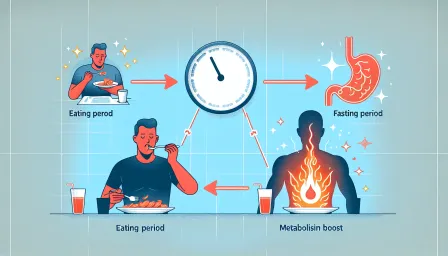Understanding Body Mass Index and Exercise: A Comprehensive Guide

A comprehensive guide to understanding Body Mass Index (BMI) and how exercise can influence it. Dive into the relationship between BMI and physical activity for better health.
Body Mass Index (BMI) is a widely used metric for categorizing individuals based on their body weight relative to their height. It is a straightforward calculation but can sometimes be misinterpreted or misunderstood. This comprehensive guide aims to explain what BMI is, how it is calculated, its limitations, and the role exercise plays in managing and improving BMI. By understanding the intricate relationship between body mass index and exercise, you can take actionable steps towards optimizing your health.
What is Body Mass Index (BMI)?
BMI is a numerical value derived from an individual’s height and weight. It is calculated using the formula:
BMI = weight (kg) / height (m^2)
For those using imperial units, the formula becomes:
BMI = (weight in pounds / (height in inches x height in inches)) x 703
BMI Categories
Based on the calculated BMI, individuals are classified into different categories:
- Underweight: BMI less than 18.5
- Normal weight: BMI between 18.5 and 24.9
- Overweight: BMI between 25 and 29.9
- Obesity: BMI of 30 and above
Limitations of BMI
While BMI is a useful screening tool, it is not without its limitations:
1. Does Not Differentiate Between Muscle and Fat
BMI does not distinguish between muscle mass and fat mass. As a result, athletes or highly muscular individuals may be classified as overweight or obese, despite having low body fat percentages.
2. Does Not Account for Distribution of Fat
BMI does not account for where fat is distributed on the body. For instance, visceral fat (fat around organs) is more dangerous than subcutaneous fat (fat under the skin), but BMI does not reflect this difference.
3. Variable Interpretations By Demographics
BMI criteria may not apply equally across all age groups, genders, and ethnic populations, leading to varied health implications.
The Connection Between BMI and Exercise
Exercise plays a crucial role in managing and improving BMI. Regular physical activity helps balance the energy equation by increasing energy expenditure, which contributes to a healthier weight.
1. Effect on Weight Loss and Maintenance
Regular exercise, especially when combined with dietary changes, can lead to significant weight loss and help maintain a healthy weight. Activities such as aerobic exercises (running, swimming, cycling) are particularly effective at reducing overall body fat.
2. Influence on Muscle Mass
Resistance training and strength exercises (weightlifting, bodyweight exercises) help build muscle mass, which can increase metabolic rate and support long-term weight management.
3. Health Benefits Beyond Weight Loss
Exercise offers numerous health benefits beyond weight loss, including improved cardiovascular health, enhanced mood, and reduced risk of chronic diseases such as type 2 diabetes and hypertension.
Creating Personalized Exercise Plans
Every individual is unique, and therefore, exercise plans should be tailored to meet specific needs and goals:
1. Assessing Current Fitness Levels
Before starting any exercise regimen, it’s essential to assess your current fitness level. Consulting with a healthcare professional or a certified fitness trainer can provide valuable insights.
2. Setting Realistic Goals
Set realistic and achievable fitness goals. Whether it’s losing a certain amount of weight, improving endurance, or building strength, having clear targets helps maintain motivation.
3. Choosing the Right Types of Exercise
- Aerobic Exercises: These include activities like running, swimming, and cycling, which help to burn calories and improve cardiovascular endurance.
- Strength Training: Activities like weightlifting and resistance exercises are essential for building and maintaining muscle mass.
- Flexibility Exercises: Yoga and stretching can improve flexibility, reduce injury risk, and enhance overall physical performance.
4. Regularly Adjusting Your Plan
As you progress, your fitness levels and goals may change. Regularly revisit and adjust your exercise plan to ensure it remains effective and challenging.
Conclusion
Understanding the relationship between Body Mass Index and exercise is vital for effective weight management and overall health. While BMI can be a useful tool, it’s important to acknowledge its limitations and interpret it within a broader context of individual health. Regular exercise, tailored to personal needs and goals, can significantly influence BMI and lead to numerous health benefits. By taking a well-informed and personalized approach to fitness, you can navigate the path towards a healthier and more fulfilling life.



























